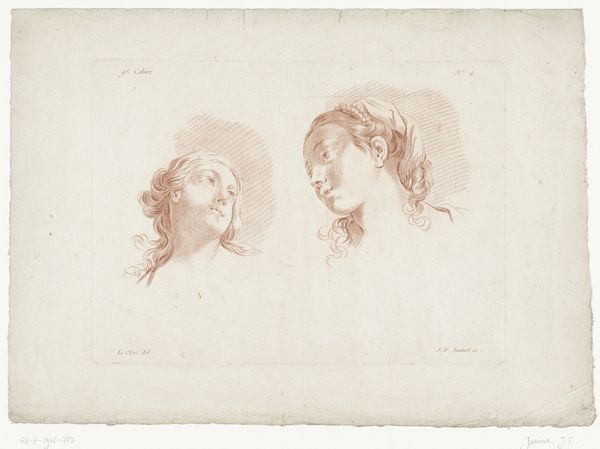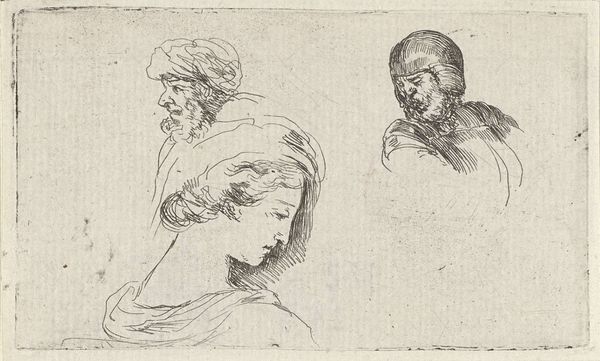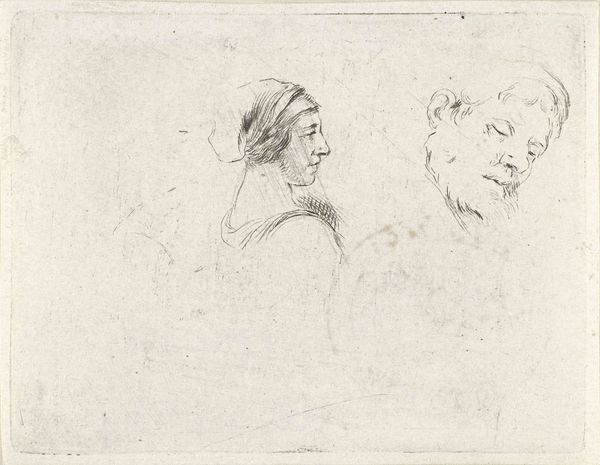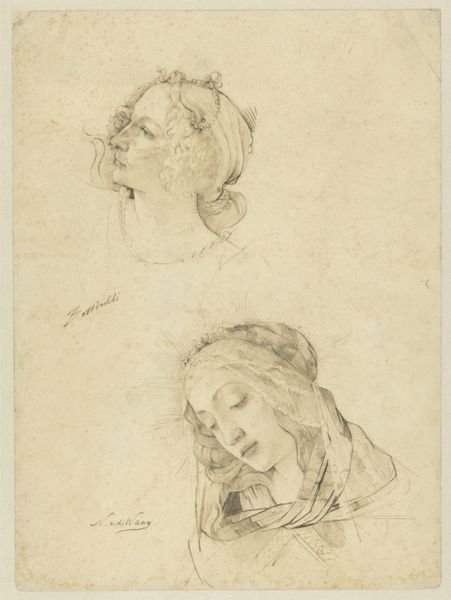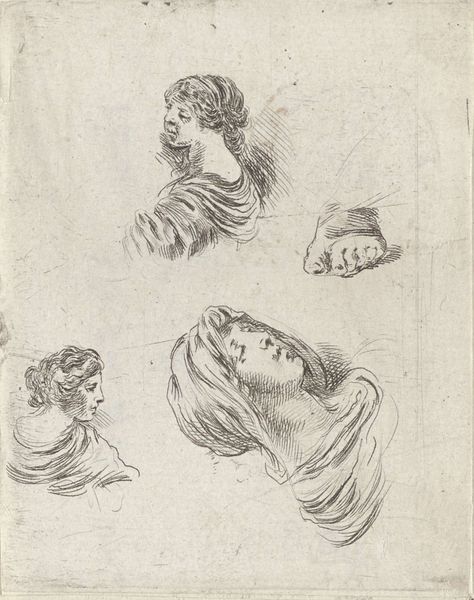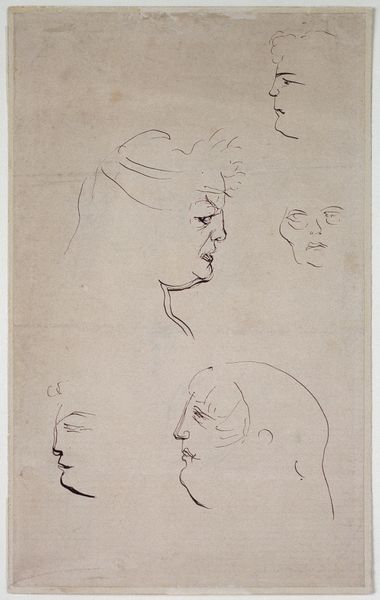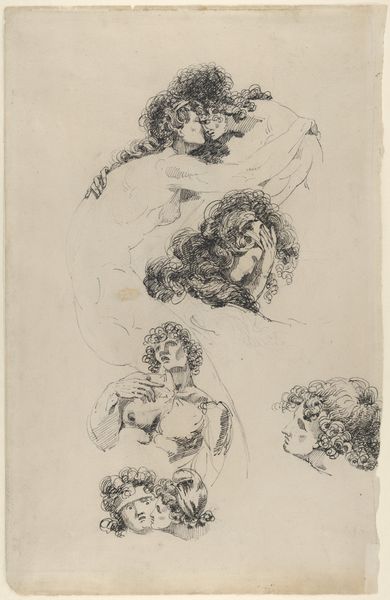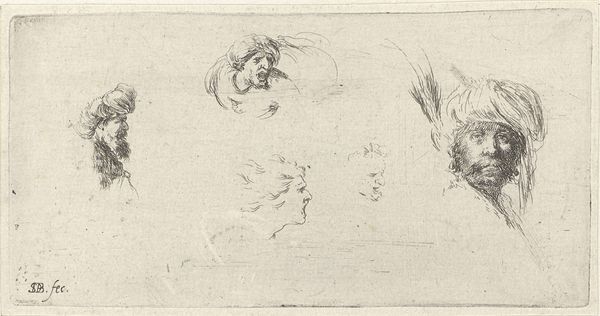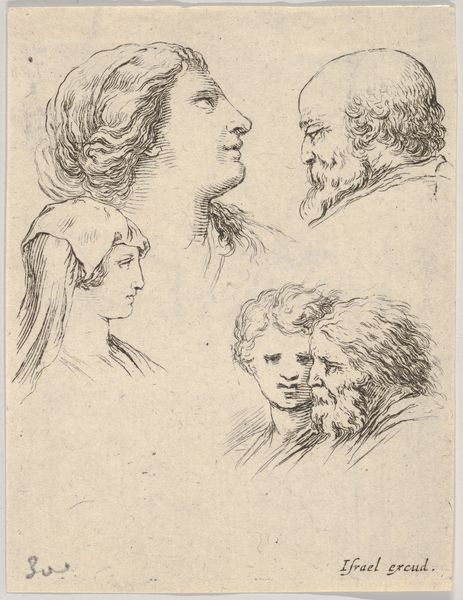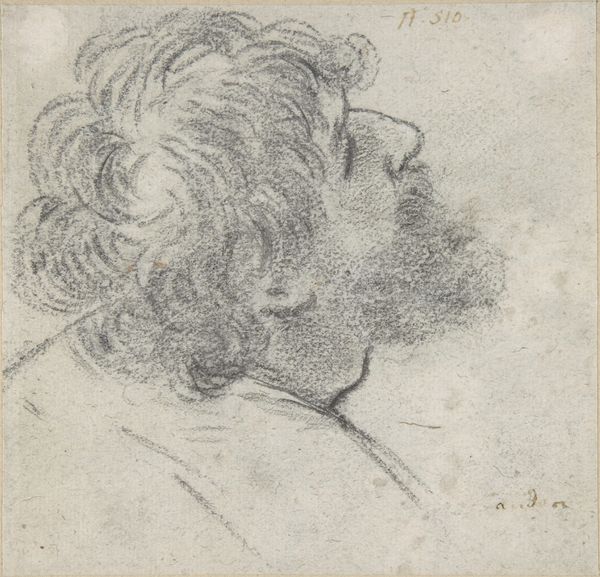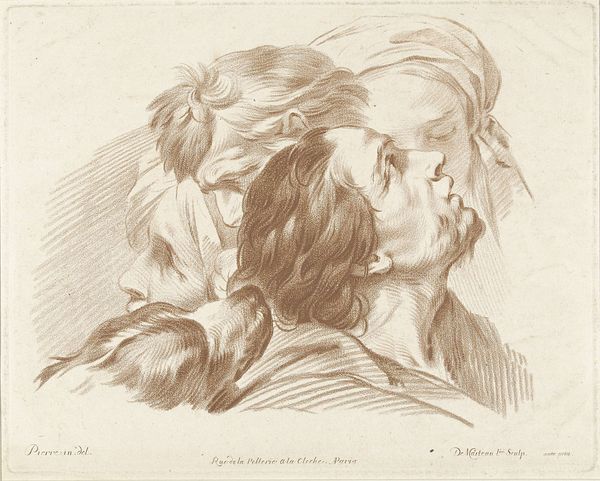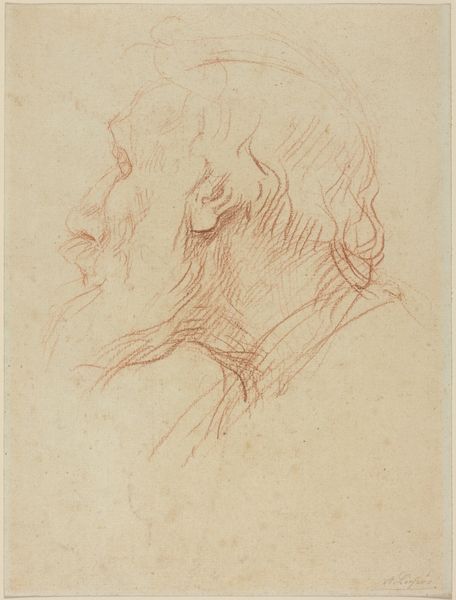
Twee hoofden van vrouwen en het hoofd van een soldaat 1620 - 1657
0:00
0:00
stefanodellabella
Rijksmuseum
drawing, paper, ink
#
portrait
#
drawing
#
comic strip sketch
#
imaginative character sketch
#
quirky sketch
#
baroque
#
paper
#
personal sketchbook
#
ink
#
idea generation sketch
#
sketchwork
#
sketchbook drawing
#
storyboard and sketchbook work
#
fantasy sketch
#
profile
#
initial sketch
Dimensions: height 68 mm, width 65 mm
Copyright: Rijks Museum: Open Domain
Curator: Looking at this artwork, there's a real intimacy to it. Editor: Indeed. The work we’re observing, entitled "Twee hoofden van vrouwen en het hoofd van een soldaat," or "Two Heads of Women and the Head of a Soldier," is currently housed here at the Rijksmuseum. Created sometime between 1620 and 1657 by Stefano della Bella, it's an ink drawing on paper. What are your initial thoughts? Curator: The sketch-like quality is striking; it feels like stumbling upon someone's private sketchbook. There's a sense of vulnerability, especially with the two women whose expressions are contemplative and inward. It makes you wonder about the role and position of women within Bella’s socio-political world. Editor: That’s an insightful read. Della Bella worked during a period of significant upheaval in Europe, and we often see art serving as commentary on the societal shifts and power dynamics of the time. Think about the role of costume too – that soldier’s helmet immediately situates him within a specific hierarchy. This contrasts starkly with the bare heads of the women, devoid of such explicit markers of status. Curator: Exactly, the absence of adornment for the women suggests different sorts of readings too. Is it supposed to reflect virtue? Simplicity? Or perhaps, lack of access to those adornments to reflect their role in society? There is a striking visual comparison here, how their image seems very different than a portrait of power, or triumph, even. Editor: Interesting points. And looking closely at della Bella’s technique here – the very fine lines, almost like whispers – they suggest the fleeting nature of power, perhaps the transience of earthly glory. Consider the context: drawings like these circulated amongst collectors and connoisseurs, shaping perceptions and influencing taste. The imagery itself takes a stand by making visual distinctions between characters. Curator: That makes me reflect too on the relationship between the male soldier and the two women. They are placed differently on the paper, but they are connected nevertheless, like different societal characters inhabiting similar stages with divergent paths, different means. Editor: Absolutely. By presenting them together, della Bella prompts us to consider their individual positions within that societal structure. What seems as innocent as a simple sketchwork reflects the many issues lived then that are still happening today. Curator: This piece really proves how even preliminary sketches can offer deep reflections of their era. Editor: Indeed. Thank you for that rich conversation; now I have many other ideas about the symbolism that is contained within.
Comments
No comments
Be the first to comment and join the conversation on the ultimate creative platform.
